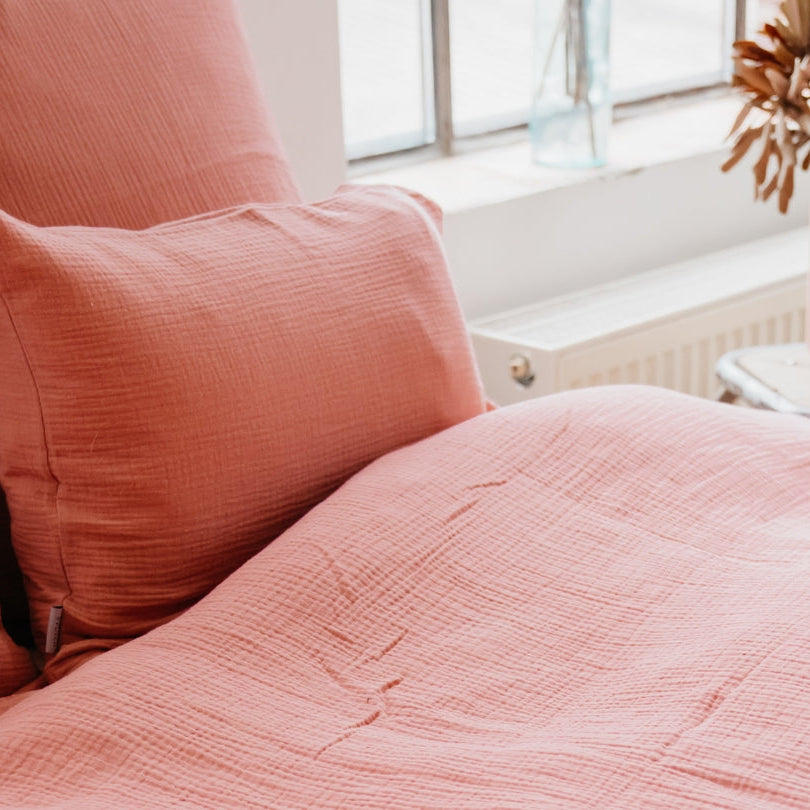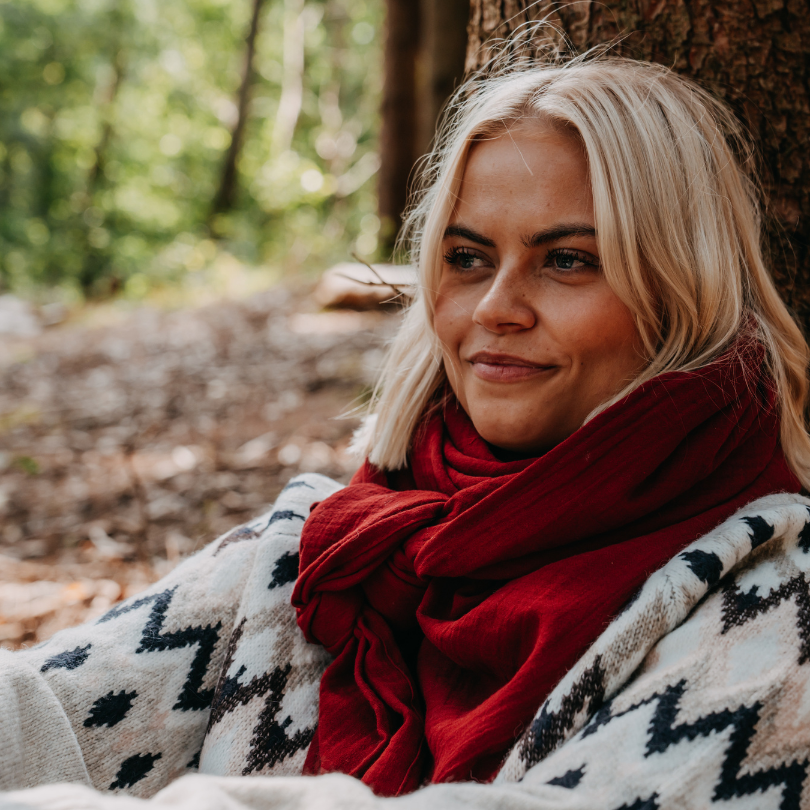Whether changing diapers, cuddling or massaging - you will spend a lot of time with your baby at the changing table in the first few weeks and months. So please make it as easy and practical as possible for yourself by adapting and setting it up to your needs and those of your baby from the outset. Steffi and Janine from Hey Wow Mom shared theirs with us in this blog post Shared tips on how to stay on top of things at the changing table!

Your perfect changing station is set up in such a way that you can keep an eye on your baby at all times and don't have to turn or move away for a second to get something. Your baby's safety is our top priority here. This also applies to this topic: Less is more!
The changing table
The ideal height of the changing table depends on your height. The standard height is usually 90 cm. We recommend the changing mat be about 6 inches below your bent elbows so that you can support yourself comfortably while still keeping your back straight. If your partner is significantly taller or shorter than you, consider in advance who will mainly look after and diaper the child and choose the height of the changing table accordingly.
By the way, instead of a new changing cabinet, a changing attachment would also work - this can be easily installed on many common chests of drawers or the washing machine. The internet is also full of DIY instructions. The only important thing is that it is wide and, above all, deep enough and that it has lateral limitations.
You then place a suitable overlay on top of the attachment. Whether made of plastic or fabric: We definitely recommend a cover or a gauze cloth stretched over it so that you don't always have to wash the entire pad. Small towels or muslin cloths are suitable instead of disposable changing pads.
Well sorted
By the way, a wide changing mat is very practical to have all the things you need when changing diapers close at hand. Some space next to or above the pad is ideal for placing things like: diapers, washcloths, a bowl of water, almond oil and wound protection cream. If you like to keep it organized, you can sort everything into baskets. Of course, a well-sealed bucket should not be missing, but with cloth diapers a simple wetbag that you can attach next to the seat will do. < /p>
In the drawers themselves, everything should be tidied away so that you can quickly get to the things you need most often, for example the bodies in the top drawer. This makes it easier for other family members to understand and find their way around when changing diapers.
Heat
A heat lamp can definitely be a sensible investment, since babies are not yet able to regulate their body temperature themselves and cool down so quickly. With a lamp, you don't need to heat the room as much, which saves energy and costs. It is also much more comfortable for your baby to lie under the warm lamp. Pay attention to the distance recommended by the manufacturer - usually 60 to 100 cm - between the lamp and the child, but be sure to test how warm it gets beforehand. We can highly recommend an automatic switch-off, and a stand can also be less complicated than a screwed lamp.

The wrapping
When changing your baby's diaper, we recommend that you avoid using wet wipes as far as possible. On the one hand they are cold on the baby's delicate skin, on the other hand they cause a lot of waste over the entire changing time. Simple washcloths with warm water are completely sufficient, you can always have both ready. A thermos allows you to provide hot water and add it to fresh cold when you need it. Different creams are rarely needed - we can use a wound protection cream with calendulahowever, I warmly recommend it. In addition, a soap dispenser with almond oil, for example, is sufficient, which is very beneficial for baby's delicate skin and can also be used for massages.
Cloth, disposable or diaper-free
The decision as to whether and how you want to change your child's diaper is entirely up to you. There is now a good selection of plant-based and skin-friendly disposable diapers that pollute less.
Cloth diapers are undoubtedly much more sustainable. Although they are more expensive to buy, in the long run they are a lot cheaper than disposable diapers. Depending on the cloth diaper system, you can, for example, buy the overpants used and/or resell them afterwards, which is also easy on the wallet. Another advantage of cloth diapers - in addition to their great designs - can also be that they help your baby to feel his own body better. While disposable nappies absorb moisture immediately and can also hold large amounts without feeling damp, with cloth nappies your baby will notice much more quickly that the nappies are getting wet after pulling. This, in turn, can aid in the drying process.
Of course, the diaper-free method causes the least waste. It requires a bit of practice and good organization and is therefore not the right concept for every family. Regardless of whether you choose to do so, a bowl to hold your baby at the changing station can be a great way to encourage your child to void without a diaper.
At night
During the night, it can be very practical to put your baby in the next larger diaper or to put in a particularly absorbent material - assuming that both fit well, of course. So you can save yourself one or two diapers in the middle of the night without your baby feeling uncomfortable. Regardless of that, we can only recommend that you place a mini changing station next to your bed, especially for the first few weeks. A pad, a washcloth or cloth and diapers, that's all you need. So you can stay in bed at night or at least in the bedroom and then continue to sleep more relaxed.
Author: Isabell Gritzka





